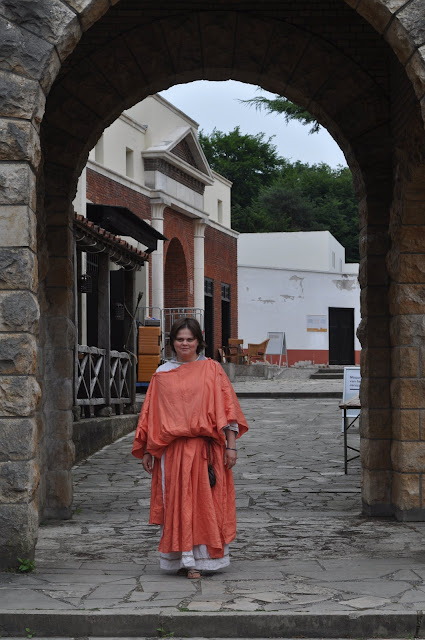Orientalis was founded in 1911 when it was called the holy land foundation. It focuses on the background and traditions of Judaism, Christianity and Islam and in the future they are going to add a Buddhist temple, a Hindu village and a spiritual path.
It is beautifully set in a forest and you can spend hours here; having a look in the museum near the entrance, walking through the villages, streets and having an oriental lunch and tea at the roman tavern.
Jewish village Beth Judah It is inspired by the village El Hosson in Jordon
There is a a synagogue and a separate eastern farm.
A caravanserai. This was a resting place and a safe place for traveling merchants in the past in West and central Asia, The Middle East, North Africa and the Balkans.
Arab village of Bait al-Islam The beautiful architecture is based on the trading town of Mirbat in Oman
The windows are small to keep the sun outside
Roman street. The first Christians were the poor and the slaves. Christianity was forbidden till 313 AD. It was an entertainment to feed Christians to the lions in Ancient Rome. In Orientalis you can find inside the houses a hidden church were the Christians met in secret.
A volunteer in the Roman Street. The volunteers provide you with a wealth of information.
In the Roman street is also a space of Mithra. Mithra was a pagan religion of the Indo-Iranian Sun-god Mithra. The pagan religion spread rapidly over the Roman empire in ancient Rome.
A pottery in Via Orientalis

A desert Bedouin camp. Bedouin are Nomadic people who speak Arabic and live in the Middle Eastern deserts, especially in Arabia, Syria, Jordan and Iraq. The number of Bedouin is decreasing.
Marguerite van Geldermalsen is a New Zealander who married a Bedouin from Petra in Jordon. Her last name gives away that she must be from Dutch descendants. She lived with her husband in a 2000 year old cave, converted to Islam and she learned Arabic. She wrote a book Married to a Bedouin
Marguerite van Geldermalsen is a New Zealander who married a Bedouin from Petra in Jordon. Her last name gives away that she must be from Dutch descendants. She lived with her husband in a 2000 year old cave, converted to Islam and she learned Arabic. She wrote a book Married to a Bedouin







Hello Marja
ReplyDeleteI find this fascinating reading.Thanks for sharing
Helen xx
This is so interesting Marja. I feel I've been on a nice tour with you. Thank you.
ReplyDeletemooi hè....
ReplyDeleteFascinating post, Marja, all those tran cultural references. And to think my father did his officer training near Nijmegen after the war before hi trip to Indonesia. Even the name stirs up feelings.
ReplyDeleteMarja, what a lovely peaceful looking place, I am so happy to have been able to travel with you to this wonderful place..
ReplyDeletea very interesting post. Thank you for sharing
I hope that you and yours are well, wishing you a relaxing weekend..
Love Sue xxx
Very interesting post to read!Thank you for sharing,Marja!
ReplyDeleteGroetjes,Steffi
Would love to walk through that fascinating place. Great post!
ReplyDelete